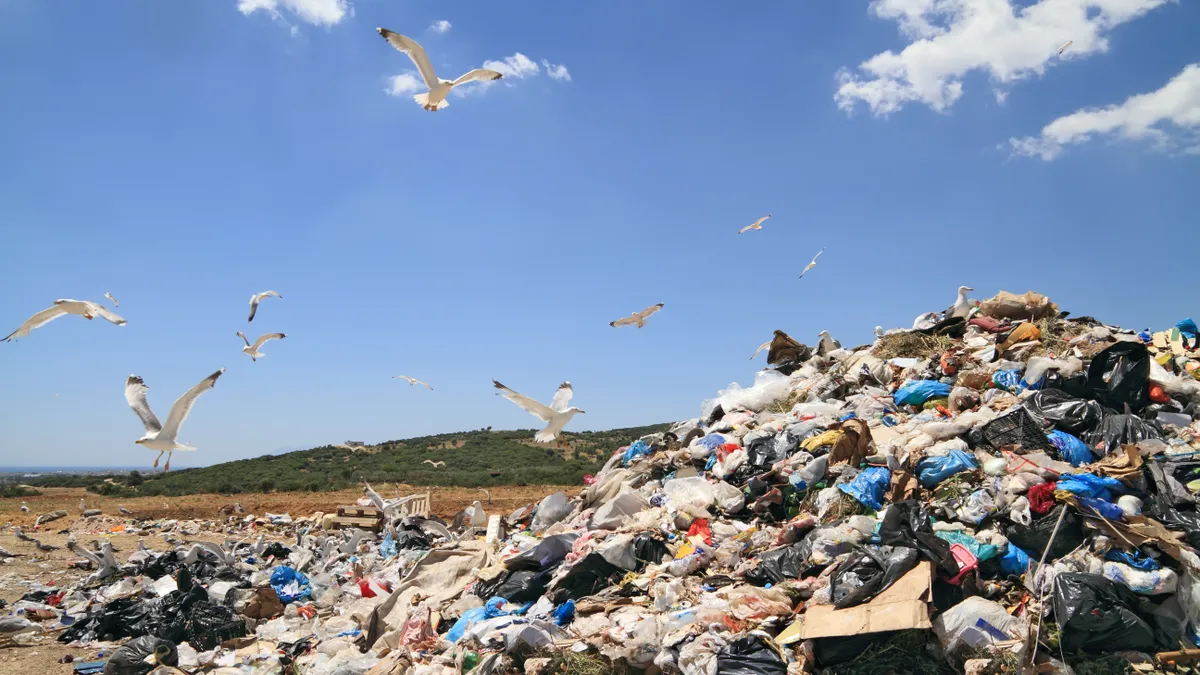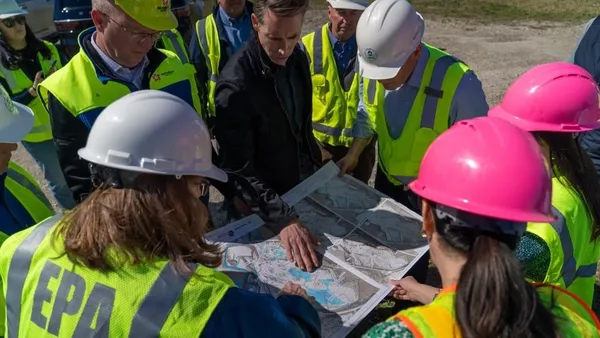Dive Brief:
- On Tuesday, the Gaviota Coast Conservancy ended its lawsuit opposing the Tajiguas Landfill expansion plan with a settlement, according to the Santa Barbara Independent. The organization alleged the original plan to expand the landfill violated the California Environmental Quality Act, the California Coastal Act and state planning regulations.
- Officials at Santa Barbara County agreed to seek alternative dump locations after Tajiguas' service life ends — expected in 2036 — as county planners will go forward with waste diversion efforts to extend its lifespan via intensified recycling programs, estimated to cost $540 million. Those plans include a sorter to divide recycling from compost and an anaerobic digester to further process reclaimed organic waste. After the landfill's closure, this recycling equipment will remain operational indefinitely.
- An agenda letter issued by the county on Tuesday stated "residual and solid waste burial activities at the Tajiguas Landfill will cease once the current permitted disposal capacity of 23,300,000 cubic yards is reached and the County will not seek an expansion of the disposal capacity of the Tajiguas Landfill other than for emergency debris. It also provides that the County will begin to seek landfill locations other than the Gaviota Coast when the Tajiguas Landfill has seven years of remaining disposal capacity."
Dive Insight:
Recycling market volatility will likely be the biggest adversary to the county's plan, as the budget calls for 75% of the landfill budget to come from the recycling program. If current market trends hold, that gamble may come up dry. The county seems willing to shoulder this risk and will need to locate new buyers for its increased recycling output. Mark Schleich, Santa Barbara County public works deputy director for resource recovery and waste management, said recycling sales have always been volatile and may soon level out, as reported by the Santa Barbara Independent.
In 1998, county supervisors vetoed a plan similar to the current one that called for a sorter and digester to reduce landfill input. The then-proposed blueprint was to simply find another site for a landfill, with officials speculating Tajiguas would be closed within 15 years. The plan, however, did not work out.
Intense opposition to every proposed site forced the county to increase the landfill's permitted capacity to 8.2 million cubic yards. The site's extended lifespan was a result of better recycling programs and lower-than-expected dump rates in the county. Whether or not the same formula will work this time remains to be seen.
As evidenced by recent events in the California legislature, there are growing signs that state recycling goals may not be attainable in the near term, as China's National Sword policy looms large. With that substantial impact to the recycling market in mind, new legislation seeks to ease the current statutory goal to reduce 50% of landfill waste through reduction, recycling and composting.














